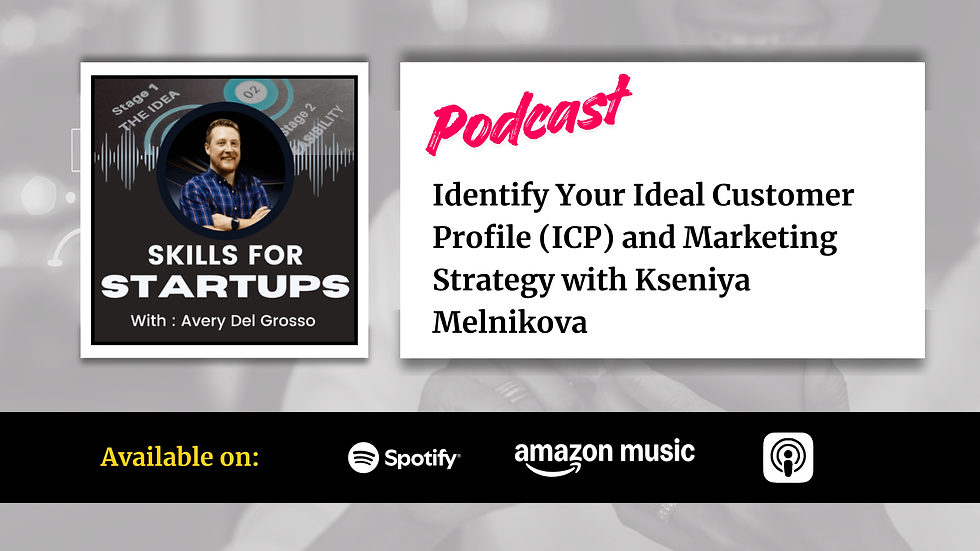Core Digital Marketing Strategy: Social Media [When, Why, What, How]
- MelkPR

- Jul 1
- 4 min read
Updated: Sep 5

Successful businesses that have built sustainable revenue engines and keep growing didn’t stumble onto success by accident. They’ve systematically implemented, refined, and truly mastered five core digital marketing strategies at the right time.
This article is part of a wider series that breaks down five essential digital marketing strategies you need as your business grows. Marketing planning can get messy, overwhelming and costly—this roadmap is here to cut through that noise and make sure you’re not wasting time, money or opportunities, so you see real ROI from your efforts.
Read on as we unpack each of the five core digital marketing strategies to level you up, deliver a structured prioritization guide, and map out the decision-making roadmap for scaling your marketing operations. In this piece, we’ll cover what you need in place before you roll out this strategy, why each step matters, the pitfalls to watch for, the trade-offs you’ll run into and the right moment to put it into action for your business.
If you’ve completed the first article on laying your SEO foundation, you’re ready to dive into this next step.
Core Digital Marketing Strategy Overview
A social media strategy is your brand’s game plan for using social platforms to proactively get in front of your community of customers, industry stakeholders and the wider ecosystem. It is the first way that you can start entering the public eye proactively and building a reputation for yourself. It defines who you’re talking to, which platforms make sense, your conversation themes, cadence, and the metrics that matter most for your lead generation and conversion. Having a strategy is critical. It keeps your messaging unified, relevant, and aligned with your broader business objectives.
Skipping social media strategy when going into the internet wild positions you for wasting your time, opening the door to risky blowback, missing engagement opportunities, and undermining the website resources you’ve already optimized for search engines. Moreover, recent trends have enabled social media content for SEO optimization. This means the consequences of skipping a unified social media strategy are weakened brand visibility, shaky audience trust, a fading competitive edge, and ultimately stunted business growth.
Social Media Marketing Strategy in 2025
Social media strategy is getting a serious makeover thanks to a handful of game-changing trends. AI-powered tools have moved front and center for content creation, performance analysis, and audience targeting helping you dodge creative burnout and work smarter, even as platforms ramp up enhanced filtering systems to weed out AI slop and throttle poorly executed content. Video still reigns supreme, with TikTok, Instagram Reels, and LinkedIn doubling down on both short- and long-form formats. Cultural fluency and authenticity aren’t optional anymore. Your audience expects you to jump into trends and tap into communities in a real way. Social commerce is exploding, too, as platforms roll out native shopping features and influencer partnerships to drive conversions. Plus, newcomers like Threads and LinkedIn upgrades are leaning into deeper engagement, multi-link bios, and carousel-style video feeds. All of this means your strategy has to be nimble, data-driven, and community-first if you want to keep pace.
Social Media Strategy Pros/ Cons
Anticipate For The Drawbacks
Time-Intensive: Crafting content, managing platforms, and engaging with audiences require ongoing effort and consistency.
Low Organic Reach: Platforms increasingly prioritize paid content, making it harder to gain visibility without ad spend.
Negative Feedback Amplification: Complaints or criticism can spread quickly and publicly, potentially harming brand reputation.
ROI Uncertainty: Measuring the direct impact of social media efforts on revenue can be complex and imprecise.
Privacy & Security Risks: Sharing content and interacting online exposes brands to data breaches and misinformation.
Platform Saturation: With so many brands competing for attention, standing out requires significant creativity and resources.
Demographic Limitations: Each platform attracts different audiences, so reaching the right people may require juggling multiple strategies.
Algorithm Volatility: Frequent changes to platform algorithms can disrupt visibility and engagement without warning.
Anticipate For The benefits
Consistent Brand Messaging: A strategy keeps your tone, visuals, and messaging unified across platforms, reinforcing brand identity.
Stronger Audience Engagement: Planned content and community interaction foster deeper relationships and loyalty.
Increased Visibility: Strategic posting and platform optimization boost discoverability and reach.
Improved ROI: With clear goals and performance tracking, you can refine efforts and maximize returns.
Efficient Content Creation: Pre-planned calendars reduce last-minute scrambling and improve quality.
Crisis Readiness: A strategy includes response protocols, helping you manage feedback and reputation proactively.
Scalable Growth: It supports expansion into new platforms, audiences, and campaigns with clarity and control.
Data-Driven Decisions: Analytics guide content adjustments, audience targeting, and budget allocation.
Team Alignment: Everyone works from the same playbook, ensuring consistency and efficiency.

When To Deploy A Social Media Strategy:
The optimal time to deploy your social media strategy is after you’ve established your website content and built a reliable system for consistently publishing optimized material. That lets you repurpose your foundational content across social channels with minimal extra effort, like meal-prepping your brand assets instead of cooking up brand-new posts for every platform. However, it’s critical to tailor each piece for the specific channel you’re using, since each requires its own formatting, tone, and engagement style. Choosing the right channels hinges on understanding where your niche ideal client is most active, so strategic platform selection becomes just as important as the content itself.
Here's a visualized decision tree of what you should be doing up until you master this core strategy:



